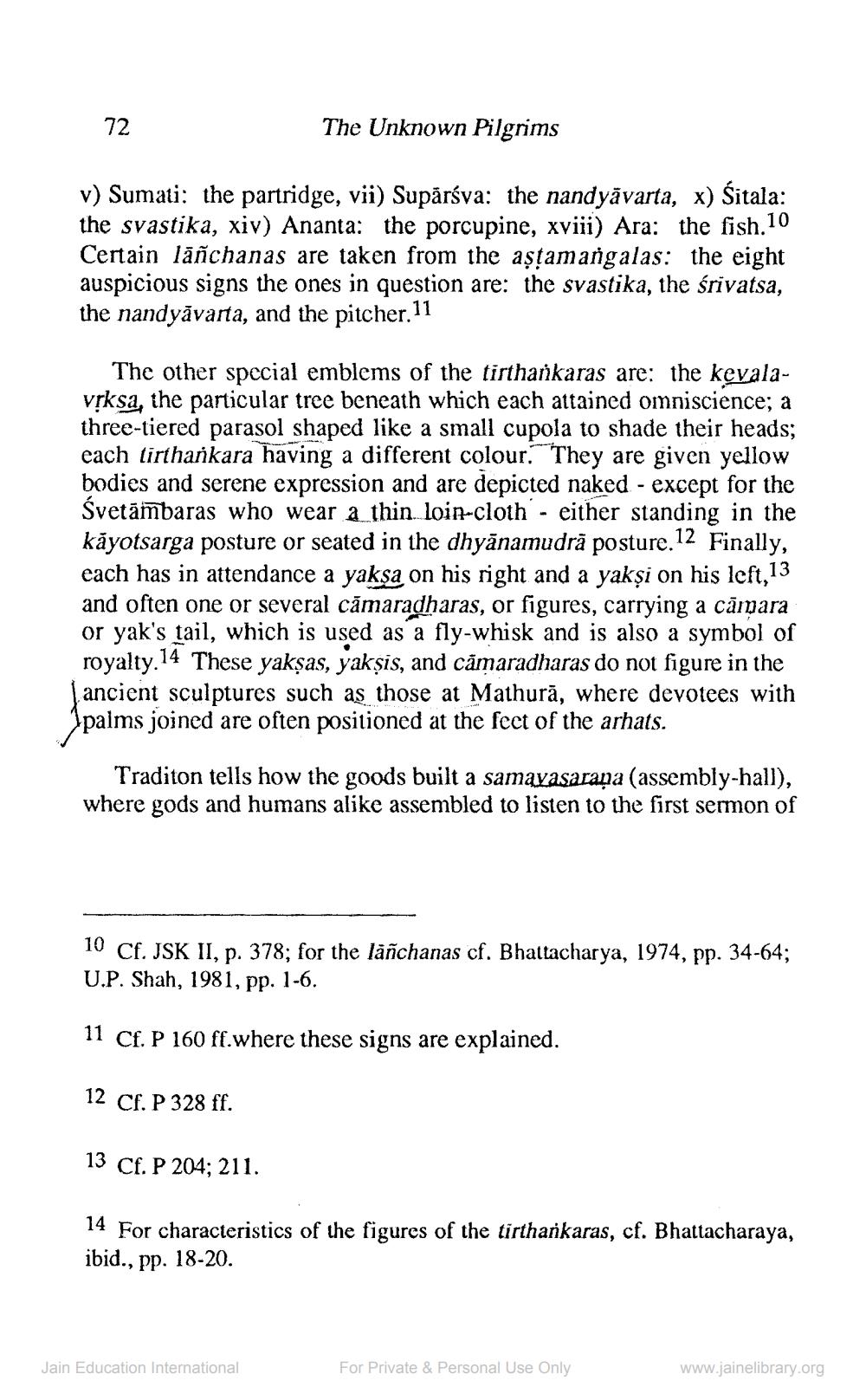________________
72
The Unknown Pilgrims
v) Sumati: the partridge, vii) Supărśva: the nandyāvarta, x) Śitala: the svastika, xiv) Ananta: the porcupine, xviii) Ara: the fish.10 Certain lāñchanas are taken from the aștamangalas: the eight auspicious signs the ones in question are: the svastika, the srivatsa, the nandyāvarta, and the pitcher.11
The other special emblems of the tirtharkaras are: the kevalavrksa, the particular tree beneath which each attained omniscience; a three-tiered parasol shaped like a small cupola to shade their heads; each tirthankara having a different colour. They are given yellow bodies and serene expression and are depicted naked - except for the Svetāmbaras who wear a thin loin-cloth - either standing in the kåyotsarga posture or seated in the dhyānamudrā posture. 12 Finally, each has in attendance a yaksa on his right and a yakşi on his left,13 and often one or several cămaradharas, or figures, carrying a campara or yak's tail, which is used as a fly-whisk and is also a symbol of royalty.14 These yakşas, yaksis, and cămaradharas do not figure in the | ancient sculptures such as those at Mathurā, where devotees with Ipalms joined are often positioned at the feet of the arhats.
Traditon tells how the goods built a samavasarana (assembly-hall), where gods and humans alike assembled to listen to the first sermon of
10 Cf. JSK II, p. 378; for the lañchanas cf. Bhattacharya, 1974, pp. 34-64; U.P. Shah, 1981, pp. 1-6.
11 Cf. P 160 ff.where these signs are explained.
12 Cf. P 328 ff.
13 Cf. P 204; 211.
14 For characteristics of the figures of the tirthankaras, cf. Bhattacharaya, ibid., pp. 18-20.
Jain Education International
For Private & Personal Use Only
www.jainelibrary.org




